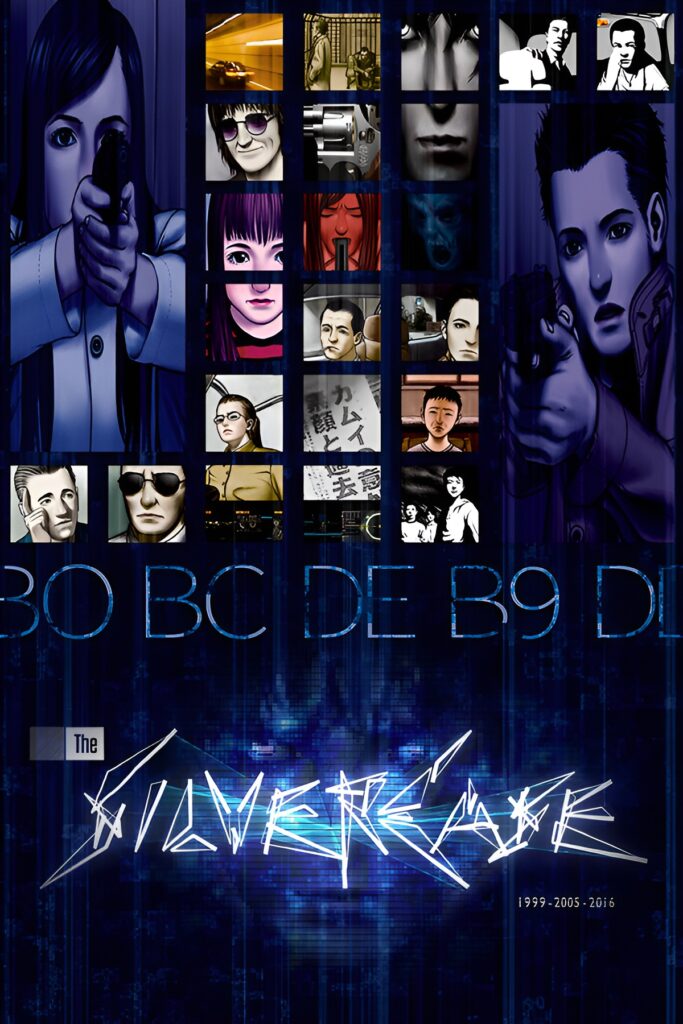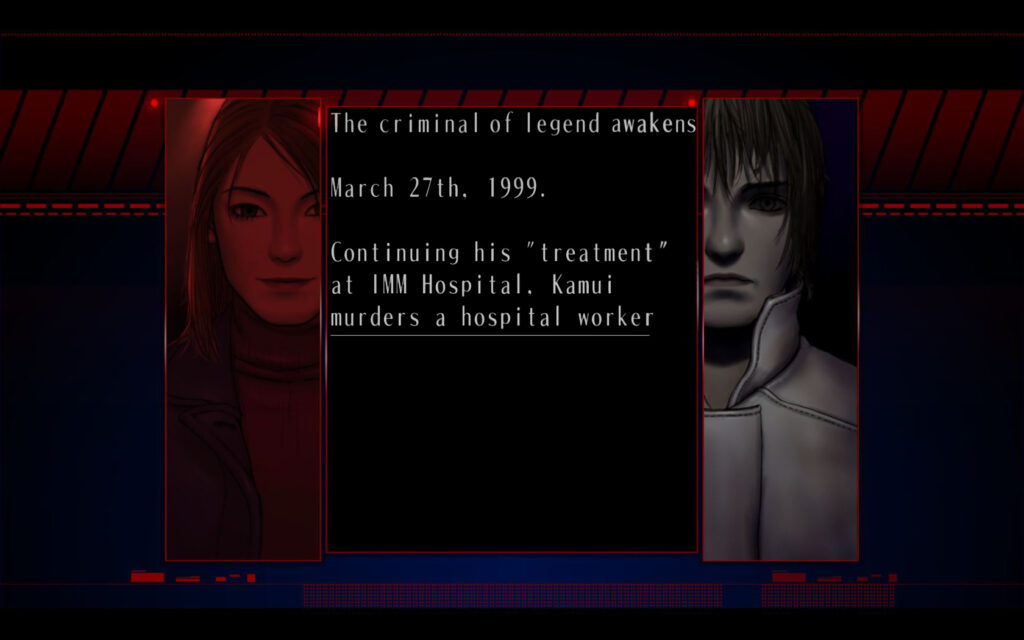In 1999, the video game development company Grasshopper Manufacture released their first game, The Silver Case. It is also the game that would kickstart the Kill the Past line of games by now famous (and personally my favorite) game director Suda51. It’s original release on the PSX however, never left Japan. It would only be 17 years later, in 2016, when The Silver Case was finally localized and therefore able to confuse audiences all around the world.

The story
But what is The Silver Case about? How does the game work? Well, unlike with most games, this question is not that simple to answer when it comes to The Silver Case. To put it in the simplest of terms, it is a hybrid between a visual novel and an adventure game, kind of like an evolved version of a point-and-click game, while also being in the first person. Where it gets even more confusing is the story and structure of the game – The Silver Case presents a storyline which you may experience from two varying perspectives. The first and main perspective is entitled Transmitter, and puts you in to the shoes of an unnamed protagonist, who joins the 24th wards police department, more specifically, it’s so called heinous crimes unit, aiming to not just arrest, but, as the game puts it, “erase criminals from existence.” During Transmitter, you help the various members of the heinous crimes unit solve, well, heinous crimes, all while uncovering a huge conspiracy surrounding a supposedly deceased serial killer named Kamui Uehara, who was arrested years prior after the infamous “silver case” by heinous crimes unit veteran Tetsuguro Kusabi. The second scenario of the game, Placebo, follows the adventures of a freelance journalist named Tokio Morishima, who also starts investigating the famous “silver case” and Kamui Uehara and crosses paths with a dangerous criminal named “the Bat.” Many times during the story, the members of the heinous crimes unit and Tokio Morishima cross paths, leading to some interesting dialogue. All in all, the story is really interesting, but the further you advance, the more convoluted and straight-up incomprehensible it unfortunately gets.
The style
Let me immediately highlight what may very well be my biggest praise for The Silver Case. This game is seriously funny. Many times while playing, I laughed out loud, which is very rare for me while playing a story-based game alone. Next to getting serious character development, the main characters of The Silver Case are given some very unique quirks, making them extremely interesting characters. Moving on, the overall aesthetic of the game does not disappoint. It has a very unique presentation, with the game being reminiscent of the way tabs would open on an old computer. It is extremely hard to describe, but the dystopian cyberpunk aesthetic of the user interface pairs really well with the big city feeling that the game invokes with an almost headache-inducing accuracy.

What adds to the game’s uniqueness is the occasional use of live-action footage in the cutscenes. Finally, the music is phenomenal. One of the earlier works of famed videogame composer Masafumi Takada, the soundtrack of The Silver Case proves that Masafumi Takada has always produced nothing but greatness.
In a way that is difficult to describe without having played the game yourself, the music really emphasizes the feeling of a city that swallows the individual. I cannot stress enough how fantastic the soundtrack is. But now, we must talk about one of, if not the most important aspect of the game – the way it is played.
The gameplay
This is unfortunately where my praise for The Silver Case ends. While most of the time, you are simply reading the plentiful dialogue, there are also some parts where you must move around the world of the game yourself in order to investigate. The controls are some of the most infuriating and counter intuitive I have ever experienced in a videogame. Even so, once you have mastered the controls, it does not get much better from there. The game’s many puzzles, while sometimes interesting, are mostly completely incomprehensible, and require some outlandish thinking to solve. But even when it all comes together, you’ve mastered the controls, the puzzles make sense, it is simply just not interesting to play.
Conclusion
The Silver Case is, as a piece of media, imperfectible. Were it a book or movie, it would not be able to convey the feelings of the game as well, but as a game, it is borderline painful to play. It is a huge shame, because it just might be one of the most interesting pieces of media I have ever consumed, while still being something I cannot to recommend anyone who wants to have fun while playing a game. If you either really are a fan of Suda51 and want to see what his early work is like or if you are a hardcore-fan of unique games and media, I cautiously recommend that you play this game – having gotten through the slog of playing it, there is a duality in me. I am glad to have played this game, all while knowing that every minute of the twelve hours I spent beating the game was fine at best and mind-numbing at worst.